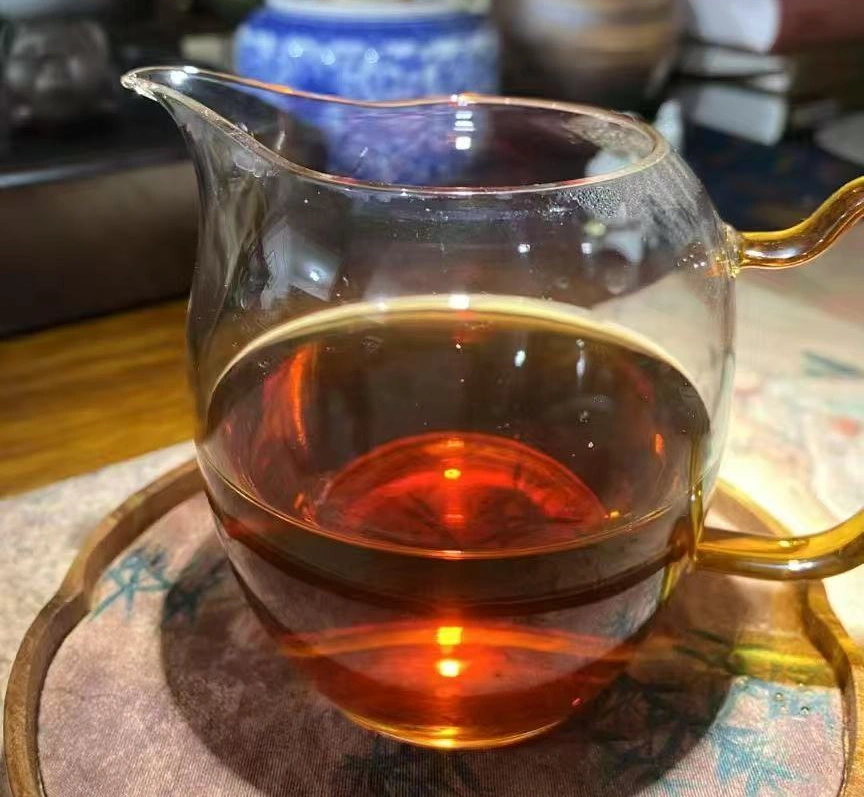Ripe Pu Erh tea invites you into a world of velvet-dark infusions, where each cup releases a cascade of earthy warmth, mellow sweetness, and whispering notes of aged wood. Imagine slow steam spiraling from your favorite teacup, carrying the scent of damp forest floor and rich chocolate. This is not just a drink—it’s a sensory embrace, a moment to pause, savor, and connect with centuries of Yunnan tea mastery.
In this guide, we’ll dive into the essence of ripe Pu Erh tea, exploring its fermentation magic, its signature flavor profiles, and everything you need to know to choose, brew, and relish the smoothest, most comforting shu Pu Erh experience.
What Is Ripe Pu Erh Tea?
Ripe Pu Erh tea (熟普洱茶, shu pu erh) is a post-fermented tea renowned for its deep, dark brew and velvety mouthfeel. Unlike raw (sheng) Pu Erh, which ages slowly over decades, ripe Pu Erh undergoes an accelerated “wet piling” (渥堆, wo dui) process: warm, humid conditions encourage beneficial microbes to transform tea leaves within months, producing rich theabrownins and an inviting, chocolatey sweetness. This deliberate fermentation yields teas that are approachable for newcomers yet richly complex for seasoned connoisseurs.

The Fermentation Process of Ripe Pu Erh Tea
The heart of ripe Pu Erh tea lies in its fermentation:
- Withering & “Kill-Green”
Freshly plucked leaves are withered, then pan-fired to halt natural oxidation. - Rolling & Piling
Leaves are gently rolled, then piled in a humid chamber. Microbes awaken, converting polyphenols into mellow theabrownins. - Turning & Resting
Workers periodically turn the piles to ensure even fermentation, maintaining a steady 55–65 °C for 45–60 days. - Drying & Aging
After fermentation, teas are dried and may rest for months to marry flavors, creating the signature smoothness of ripe Pu Erh tea.
This engineered “aging” crafts a tea that’s dark as mahogany, with notes of cocoa, caramel, and forest loam.
Flavor Profile & Varietals
Classic Shu Pu Erh Notes
When you sip ripe Pu Erh tea, expect:
- Earthy Richness: Deep soil and oakwood aromas.
- Chocolate & Caramel: Soft sweetness gliding across your tongue.
- Mellow Finish: A lingering velvet aftertaste, devoid of harsh astringency.
Yiwu vs Bulang Mountain Ripe Pu Erh
- Yiwu Ripe Pu Erh: Floral high-mountain terroir imparts subtle orchid and honeydew accents to the smooth, sweet base.
- Bulang Mountain Ripe Pu Erh: Bold and mineral-driven, with pronounced bark-like depth and a dark plum sweetness.
Each region’s soil, humidity, and microbial community shape its unique ripe Pu Erh tea expression.
Aged Ripe Pu Erh
Even ripe Pu Erh tea benefits from cellar time. A 5- or 10-year aged shu develops:
- Deeper Molasses: Richer, more complex sweet notes.
- Softened Earthiness: A gentler, rounder mouthfeel.
- Rare Nuances: Subtle tobacco, leather, or even dried fruit hints.
Health Benefits of Ripe Pu Erh Tea
Though celebrated for flavor, ripe Pu Erh tea also offers wellness perks:
- Digestive Support & Gut Comfort
Fermented compounds help balance gut flora and soothe occasional bloating. - Cholesterol & Heart Health
Theabrownins and sterols in shu pu erh may assist in lowering LDL cholesterol and supporting arterial function. - Gentle Detox & Metabolism Boost
Mild caffeine and polyphenols work in harmony to lift energy and metabolic rate without jitters.
Enjoying ripe Pu Erh tea daily can become a nourishing ritual that complements a balanced lifestyle.
How to Choose Quality Ripe Pu Erh Tea
Selecting the best ripe Pu Erh tea means paying attention to:
- Cake vs Brick: Cakes (饼茶, bingcha) are easy to store; bricks (砖茶, zhuancha) offer denser aging.
- Origin Labels & Age Stamps: Look for clear markings of region (Yiwu, Bulang, Menghai) and production date.
- Aroma & Leaf Texture: Quality shu pu erh exudes a clean, forest-floor scent, and its leaves should feel supple, not brittle.
Avoid teas with moldy or sour odors—authentic ripe Pu Erh tea should smell rich and inviting.
Brewing Ripe Pu Erh Tea for Maximum Enjoyment
Rinse and Awaken
- Quick Wash: Rinse 3–5 seconds with near-boiling water to remove dust and “wake up” the leaves.
Water Temperature & Steep Times
- Western Style:
- 5 g tea per 240 ml
- 95–100 °C water
- Steep 3–5 minutes
- Gongfu Style:
- 8–10 g in a small gaiwan
- Multiple infusions (20–30 s each), gradually increasing time
Tips for Aged Varieties
- Longer Rinses: Gently rinse older cakes twice to reveal deeper aromas.
- Extended Infusions: Let each steep linger 5–10 seconds longer to coax out mature sweetness.

Storing and Aging Ripe Pu Erh Tea
Though ready to drink, ripe Pu Erh tea matures gracefully:
- Ideal Conditions: 20–25 °C, 50–65% humidity, away from direct light and odors.
- Airtight vs Breathable: Store in a sealed tin for convenience—but if you crave complex aging, allow slight airflow in a clay jar.
- When to Drink Fresh vs Aged: Young shu offers vibrant cocoa notes; after 3–5 years, deeper molasses and leather nuances emerge.
FAQs About Ripe Pu Erh Tea
- How long to steep ripe Pu Erh?
Start with 3 minutes (Western) or 20 seconds (Gongfu) and adjust to taste. - Can I drink shu Pu Erh daily?
Absolutely—1–3 cups a day is both pleasurable and potentially health-supportive. - What’s the best temperature for ripe Pu Erh tea?
Near-boiling water (95–100 °C) unlocks its full-bodied character. - 🔗 For more tea brewing methods, check out the YouTube video explaining the brewing methods.
Conclusion: Embrace the Richness of Ripe Pu Erh Tea
From the microbial alchemy of “wet piling” to the ancient tea gardens of Yunnan, ripe Pu Erh tea offers a sensorial journey through earth, time, and tradition. Whether you savor the smooth comfort of a freshly pressed cake or explore the depth of a decade-old brick, each cup invites warmth, mindfulness, and renewal. Steep, sip, and discover why ripe Pu Erh tea remains one of the world’s most cherished tea treasures.



